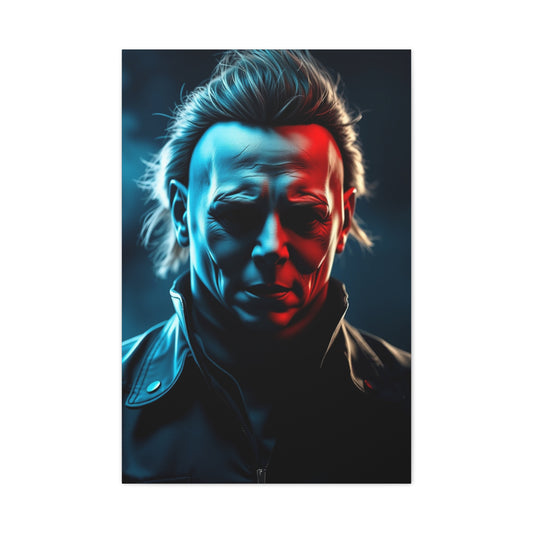Keeping a kitchen clutter-free is one of the most satisfying ways to maintain a sense of order in daily life. The kitchen is not only the heart of the home but also a space that demands both aesthetic appeal and functional efficiency. Modern kitchen cabinets serve as the perfect combination of style and practicality. They help organize utensils, cookware, and ingredients while enhancing the overall ambiance of the kitchen. A thoughtfully designed cabinet system ensures that every item has its place, reducing chaos and making daily routines more enjoyable. Modern kitchen cabinet designs focus on clean lines, smart storage solutions, and versatile aesthetics that can transform any kitchen space into a refined, contemporary environment.
Glossy Modern Kitchen Cabinets
Glossy kitchen cabinets have become a hallmark of modern kitchen design. Crafted with lacquered glass or high-gloss laminate finishes, these cabinets reflect light beautifully, giving the kitchen a fresh and vibrant atmosphere. High-gloss surfaces are available in a range of colors, from bright shades that energize the space to muted tones that add sophistication. The reflective nature of glossy cabinets also makes kitchens appear larger and more open, which is particularly beneficial in compact spaces. These cabinets are designed to be low-maintenance, resistant to scratches, and easy to clean, making them ideal for households that value both elegance and convenience. Their smooth surfaces create a seamless look, enhancing the overall modern aesthetic of the kitchen.
Practical Kitchen Cabinet Design
One of the greatest advantages of modern kitchen cabinets is their adaptability to spaces of any size. Even small kitchens can accommodate well-designed cabinet systems that maximize storage without overwhelming the room. Modern cabinet designs often include a combination of upper and lower storage units, tailored to fit the kitchen layout precisely. Straight-shaped kitchens, for instance, benefit from an equal distribution of top and base cabinets, providing a balanced look while ensuring that all storage needs are met. Custom-made cabinets allow homeowners to optimize every inch of available space, incorporating specialized compartments, pull-out drawers, and corner shelving. Such thoughtful design ensures that essential items are always within reach while keeping surfaces uncluttered.
Modern And Monochrome Kitchen Cabinets
Monochrome kitchen cabinets offer a timeless alternative to colorful designs, providing a clean and sophisticated aesthetic. Black and white cabinets, in particular, create a striking visual contrast while maintaining simplicity. These color schemes allow homeowners to experiment with textures and materials without overwhelming the senses. Monochrome kitchens often employ matte finishes for a subtle, refined look or glossy surfaces for a more dramatic effect. The combination of black and white can be enhanced with metallic accents, glass inserts, or subtle lighting to elevate the visual appeal. This approach balances elegance and practicality, offering a versatile design that complements a wide range of kitchen styles.
Modern Wooden Kitchen Cabinets
Wooden kitchen cabinets bring warmth and character to modern kitchens while maintaining contemporary appeal. Natural wood textures can be paired with sleek finishes, glass panels, or minimalist hardware to create a harmonious blend of modern and classic elements. Wooden cabinets are particularly versatile, as they work well with both neutral and vibrant color palettes. Details such as polished knobs, handles, and glass shutters enhance their aesthetic, providing subtle sophistication without overpowering the overall design. Wood also offers durability and resilience, making it an excellent choice for cabinets that must withstand frequent use. With a carefully chosen wood finish, these cabinets can impart a cozy and inviting feel while remaining fully functional for modern living.
Modern Vintage Cabinet Design
For those who appreciate the charm of retro designs, modern vintage kitchen cabinets offer a perfect solution. These cabinets combine the nostalgic appeal of traditional cabinetry with contemporary functionality and finishes. Vintage-inspired cabinets may include intricate detailing, classic handles, or paneled doors, paired with modern appliances and sleek countertops to create a balanced look. The overall design often incorporates neutral or muted colors, allowing the cabinets to stand out while maintaining harmony with the rest of the kitchen. By blending old and new elements, modern vintage cabinets offer a unique character, making the kitchen feel warm and personalized while still adhering to modern standards of convenience and efficiency.
Classical Kitchen Cabinet Design
Classical modern kitchen cabinets are best suited for larger kitchen spaces where extended cabinetry can be accommodated. These cabinets often extend from floor to ceiling, providing generous storage for cookware, dinnerware, and pantry items. High-quality materials and finishes, such as polished wood or stone accents, enhance the luxurious feel of these cabinets. Classical designs often feature symmetrical arrangements, clean lines, and elegant details that convey a sense of sophistication. While they retain a modern aesthetic, classical cabinets emphasize spaciousness and order, allowing homeowners to maintain a clutter-free environment without compromising on style. The combination of scale, materials, and design elements creates a timeless kitchen that is both practical and visually impressive.
A Cabinet Design With Understated Elegance
Not every kitchen demands glossy, bold cabinets. Some homeowners prefer a more subtle, understated approach without compromising style. Cabinets designed with muted tones, matte finishes, or soft textures create a sophisticated yet modern kitchen environment. These cabinets often feature sleek, handleless designs or minimalist hardware, allowing the clean lines and material quality to stand out. Adding understated metallic detailing, such as copper or brushed steel, can enhance elegance without overpowering the space. Such designs are particularly suitable for kitchens where balance and calmness are priorities. These cabinets provide functional storage solutions while imparting a quiet charm that complements a modern home.
Understated elegance also ensures that the kitchen remains versatile over time. Unlike bold designs that may go out of fashion quickly, cabinets with subtle finishes adapt to evolving trends. Neutral-colored cabinets provide a base for adding seasonal accents, vibrant kitchenware, or decorative elements, giving homeowners freedom to refresh the kitchen without undergoing a major remodel. Incorporating soft lighting under cabinets or along countertops can further enhance the refined appearance. This approach demonstrates that modern kitchen cabinets do not need to shout to impress; careful design, attention to detail, and functional layout are often enough to create a space that feels luxurious and timeless.
Another Cabinetry In The Wall
Modern kitchen designs often include wall-integrated cabinetry that maximizes storage while maintaining a seamless aesthetic. These designs allow cabinets to blend with the walls, creating a continuous, clean look. Wall cabinets that extend from floor to ceiling offer an incredible amount of storage while maintaining minimal visual clutter. Many homeowners choose this approach in open-concept kitchens to maintain harmony with adjoining living spaces. The seamless wall design not only looks contemporary but also makes the kitchen feel more spacious by avoiding interruptions in lines and surfaces.
The design can be further enhanced by incorporating concealed handles, push-to-open mechanisms, or integrated appliances. These innovations allow the kitchen to remain functional without compromising on the sleek, uninterrupted appearance. Wall-integrated cabinets are especially useful for storing rarely used items, pantry staples, or large cookware that would otherwise occupy precious counter space. By combining vertical storage with strategically designed interiors, this cabinet style can completely transform a kitchen, turning even a modest space into an efficient, visually cohesive environment. When paired with marble or quartz countertops, the overall effect is one of understated sophistication.
Ultra Modern Kitchen Cabinets
Ultra-modern kitchen cabinets represent the pinnacle of contemporary design, blending aesthetics, functionality, and innovation. These designs often combine closed cabinetry with open shelving, modular units, and hidden compartments to create a highly functional environment. Ultra-modern cabinets are ideal for large kitchens where storage needs are extensive, yet the homeowner desires a sleek, uncluttered look. Materials like laminated glass, polished wood, and matte metals are frequently used to achieve a futuristic aesthetic while maintaining practicality.
Color choices for ultra-modern cabinets tend to range from subtle neutrals to bold, statement-making shades, allowing for flexibility in matching the rest of the kitchen. Open shelving within these designs can be used to display decorative items or frequently used kitchenware, ensuring easy access while maintaining a clean appearance. Additionally, integrated lighting, including under-cabinet LED strips, enhances both functionality and ambiance. These designs reflect a balance between minimalism and utility, demonstrating that modern kitchens can be both elegant and highly organized.
Functional Innovations In Modern Cabinets
Modern kitchen cabinets are not just about aesthetics; they are designed to simplify daily tasks. Advanced features such as pull-out pantries, corner carousels, and soft-close drawers have transformed the way kitchens function. Pull-out pantry units allow homeowners to organize spices, dry goods, and canned items efficiently, reducing the time spent searching for ingredients. Corner carousels utilize previously wasted corner spaces, ensuring that every inch of the kitchen contributes to storage. Soft-close mechanisms prevent doors and drawers from slamming, prolonging the life of the cabinetry while maintaining a peaceful kitchen environment.
Other functional innovations include integrated waste sorting systems, hidden appliance garages, and adjustable shelving that can adapt to the changing needs of the household. Many modern cabinet designs also incorporate modular units, allowing sections to be rearranged or expanded as required. This adaptability is particularly useful in growing families or in homes where kitchen requirements evolve over time. The emphasis on functionality ensures that the kitchen remains a space where cooking, cleaning, and social interaction are seamless and enjoyable. Modern cabinets are no longer mere storage units; they are thoughtful solutions that enhance everyday living.
The Role Of Material And Finish
Choosing the right material and finish is crucial in modern kitchen cabinet design. Materials influence not only the visual appeal but also durability and maintenance. Common options include laminated wood, high-gloss acrylic, natural wood, and glass, each offering unique advantages. High-gloss acrylic or laminated finishes create a reflective, polished surface that brightens the kitchen and makes the space feel larger. Natural wood brings warmth and texture, balancing modern aesthetics with a sense of homeliness. Glass panels in cabinets add visual interest, break monotony, and allow homeowners to showcase carefully curated kitchenware.
Finishes such as matte, glossy, or textured coatings play a significant role in setting the tone of the kitchen. Glossy finishes impart energy and vibrancy, perfect for contemporary urban spaces. Matte finishes lend understated elegance and a sense of calm, ideal for minimalist kitchens. Textured finishes, including wood grains or brushed metal, provide depth and character, making the cabinets a focal point of the kitchen. The choice of finish also impacts practical considerations such as cleaning and maintenance. Glossy surfaces are easy to wipe clean but may show fingerprints more easily, while matte or textured surfaces hide smudges and require less frequent cleaning.
Maximizing Storage With Smart Layouts
A critical aspect of modern kitchen cabinet design is the layout, which determines how effectively storage is utilized. Efficient layouts integrate cabinets with kitchen workflow, ensuring that cooking, preparation, and cleanup zones are logically organized. Common layouts include straight, L-shaped, U-shaped, and island-centric designs, each offering distinct advantages. In straight or single-wall kitchens, maximizing vertical space with tall cabinets and stacked storage becomes essential. L-shaped kitchens benefit from corner solutions like lazy Susans or pull-out shelves, while U-shaped kitchens offer abundant countertop space complemented by extensive cabinetry.
Islands provide additional storage and often serve as multifunctional units, incorporating drawers, open shelves, and even built-in appliances. They can act as food preparation zones, casual dining areas, or display spaces, enhancing the kitchen’s usability. Modern cabinet design also emphasizes accessibility, with frequently used items stored at eye level and less frequently used items placed in higher or lower cabinets. By integrating these smart layout principles, homeowners can ensure that their kitchen remains clutter-free and functional while maintaining a visually cohesive design.
Lighting And Ambiance In Cabinet Design
Lighting is an often-overlooked aspect of cabinet design that significantly influences the kitchen’s ambiance. Modern kitchen cabinets are frequently equipped with built-in lighting, such as under-cabinet LEDs or interior cabinet illumination. This type of lighting enhances visibility during food preparation and highlights design elements like textured finishes, glass inserts, or decorative hardware. Warm lighting can create a cozy, inviting atmosphere, while cool lighting emphasizes modernity and minimalism. Thoughtful placement of lighting fixtures can also enhance the perception of space, making even smaller kitchens feel more open and welcoming.
Lighting can also serve as a design statement. Backlit glass cabinets or illuminated open shelving draws attention to carefully arranged dishware or decorative objects, adding depth and visual interest to the kitchen. Incorporating dimmable or adjustable lighting systems allows homeowners to customize the mood, whether for intimate family dinners or lively social gatherings. Integrating lighting into modern cabinet design is no longer optional; it has become an essential feature that combines functionality with aesthetic appeal.
Combining Open And Closed Storage
Modern kitchen cabinets often balance open and closed storage to create a visually appealing and functional space. Closed cabinets provide a clutter-free appearance, hiding everyday items like pots, pans, and appliances, while open shelving allows for the display of decorative objects, frequently used kitchenware, or cookbooks. This combination offers the best of both worlds, ensuring that the kitchen remains organized without feeling sterile or overly formal. Open shelving encourages homeowners to maintain order since items are visible, promoting a sense of discipline and intentionality in storage.
Designers often incorporate open shelves at eye level or in small alcoves to break the monotony of long stretches of cabinetry. Floating shelves, integrated niches, and modular shelving units add variety to the kitchen’s visual landscape. Materials used for open storage, such as wood, metal, or glass, are chosen to complement the surrounding closed cabinets, maintaining cohesion in design. By thoughtfully combining open and closed storage, modern kitchen cabinets can achieve both practicality and aesthetic harmony, providing a functional yet inviting space for cooking, entertaining, and daily life.
Exploring Color Palettes in Modern Kitchen Cabinets
Color plays a critical role in modern kitchen cabinet design, influencing mood, space perception, and overall aesthetic. Modern kitchens embrace a wide spectrum of colors, from muted neutrals to bold statement hues. Neutral shades like grey, beige, and off-white are popular for their timeless appeal and versatility. They provide a calm and cohesive backdrop, allowing other elements such as countertops, backsplashes, or kitchen accessories to stand out. These colors also offer flexibility for homeowners who enjoy updating accent pieces and décor over time, keeping the kitchen fresh without major renovations.
Bold colors like deep blue, forest green, or mustard yellow are increasingly favored in contemporary designs for creating dramatic focal points. When applied to cabinets, these colors bring personality and energy into the kitchen. Pairing dark-colored lower cabinets with lighter upper cabinets can create balance, prevent the space from feeling heavy, and enhance visual depth. Modern designers often experiment with two-tone cabinet designs to introduce contrast and highlight specific kitchen zones, such as cooking areas or islands. Carefully chosen color palettes, combined with appropriate finishes, ensure that the kitchen remains modern, welcoming, and visually engaging.
Customization and Tailor-Made Designs
One of the defining features of modern kitchen cabinetry is the ability to customize designs according to space, lifestyle, and aesthetic preferences. Tailor-made cabinets allow homeowners to maximize every inch of their kitchen while meeting specific storage needs. Customization includes varying cabinet heights, widths, and depths to accommodate appliances, pantry items, and kitchenware. It also allows the incorporation of unique features such as pull-out trays, wine racks, spice drawers, and utensil organizers. Custom cabinets can transform even irregularly shaped kitchens into functional, efficient spaces without compromising style.
Customization extends to material choices, finishes, hardware, and interior layouts. Homeowners can select from wood, laminate, acrylic, or glass, and pair these with matte, glossy, or textured finishes to match the kitchen’s overall design. Tailor-made cabinets also allow for integration with modern appliances, ensuring a seamless appearance and optimal workflow. Designers often suggest modular components within custom designs to allow future flexibility, enabling the kitchen to evolve with changing requirements. Personalized cabinetry guarantees that every aspect of storage and functionality is considered, enhancing both usability and aesthetics.
Glass Accents and Transparency
Glass is a highly versatile material that adds elegance, depth, and visual interest to modern kitchen cabinets. Glass-fronted cabinets can display carefully curated dishware, decorative items, or frequently used utensils while maintaining a clean, organized appearance. Transparent or frosted glass options provide varying levels of visibility, allowing homeowners to showcase prized possessions or hide everyday items. Glass adds lightness to the kitchen, breaking up solid cabinet expanses and enhancing the perception of space, especially in smaller kitchens.
Glass accents can be combined with lighting to create a dramatic effect. Backlit glass panels highlight contents while introducing ambiance, adding a sense of sophistication to the kitchen. Frameless glass doors or minimalist metallic frames contribute to a sleek, contemporary look, complementing other cabinet materials such as wood or laminate. Incorporating glass elements also allows designers to experiment with textures and patterns, including etched, tinted, or patterned glass, further enhancing the visual appeal. Through the use of glass, modern kitchen cabinets achieve a harmonious balance between transparency, style, and functionality.
Metallic Touches and Hardware
The hardware and metallic accents used in modern kitchen cabinets can significantly enhance the overall design. Handles, knobs, hinges, and edge trims not only serve functional purposes but also contribute to the kitchen’s aesthetic identity. Metals such as brushed nickel, stainless steel, matte black, and copper are commonly used to add elegance and modernity. Sleek, linear handles emphasize clean lines, while subtle metallic trims can create understated sophistication. Some contemporary designs even incorporate handleless mechanisms or push-to-open systems, ensuring a seamless and uninterrupted appearance.
Metallic finishes can be extended beyond hardware to decorative accents, inlays, or framing around glass panels. Copper or gold detailing, for instance, can provide warmth and richness, balancing cooler cabinet tones. Stainless steel accents harmonize with appliances and create a cohesive, minimalist look. Properly selected metallic touches can elevate a simple cabinet design into a statement feature, emphasizing craftsmanship and attention to detail. By thoughtfully integrating metals, modern kitchen cabinets achieve a level of refinement that complements both functionality and visual impact.
Modular Innovations and Flexibility
Modern kitchen cabinets increasingly rely on modular design principles to enhance flexibility, efficiency, and adaptability. Modular cabinets consist of pre-fabricated units that can be configured to suit various kitchen layouts, including straight, L-shaped, U-shaped, or island-centric designs. This approach allows homeowners to optimize storage, accommodate appliances, and maintain workflow efficiency. Modular units also simplify renovations or expansions, as individual components can be replaced or rearranged without disrupting the entire kitchen setup.
Flexibility in modular cabinetry extends to adjustable shelving, pull-out drawers, and multi-functional units. Adjustable shelves accommodate items of different sizes, while pull-out units maximize corner spaces or deep storage areas. Some modular designs integrate open shelving, spice racks, or compact storage compartments, allowing homeowners to customize according to their lifestyle. Modular innovation also includes hidden storage solutions, such as concealed compartments for small appliances or waste management systems. By prioritizing adaptability, modern modular cabinets ensure that kitchens remain organized, efficient, and capable of evolving with changing needs.
Storage Solutions for Every Kitchen
Efficient storage is a cornerstone of modern kitchen design. Contemporary cabinets incorporate a variety of solutions to maximize functionality while maintaining aesthetics. Deep drawers, pull-out baskets, and tiered shelving systems allow for organized storage of pots, pans, and utensils. Pantry cabinets with adjustable compartments provide easy access to dry goods and ingredients. Tall cabinets take advantage of vertical space, storing larger items such as baking trays, small appliances, or cleaning supplies. Innovative storage solutions like rotating carousels or sliding racks optimize corners and underutilized areas.
Beyond traditional storage, modern cabinets also integrate specialized compartments for recyclables, utensils, or spices, ensuring that every item has a designated place. Vertical dividers and drawer organizers create order within drawers, preventing clutter and making items easy to locate. Clever storage strategies also consider ergonomic principles, keeping frequently used items within reach and less-used items higher or lower. By combining intelligent layouts with innovative compartments, modern kitchen cabinets transform storage into a practical, efficient, and visually pleasing experience.
Enhancing Aesthetics with Texture
Texture is an often-overlooked element that adds depth and character to modern kitchen cabinets. Smooth, glossy surfaces create a polished, contemporary look, while matte finishes offer subtle elegance. Textured wood grains or embossed laminates introduce warmth and dimension, enhancing visual interest. Combining different textures within the same kitchen, such as pairing glossy upper cabinets with matte lower cabinets, adds contrast and prevents monotony. Textures also affect tactile experience, making interaction with the cabinetry more pleasant and enhancing the sense of quality.
Designers often leverage texture to complement other materials in the kitchen, including countertops, backsplashes, or flooring. A textured cabinet surface can harmonize with a stone countertop or a tiled backsplash, creating a cohesive and layered design. Even small details, such as patterned cabinet panels or decorative trim, contribute to overall texture and sophistication. By thoughtfully incorporating textures, modern kitchen cabinets achieve a balance between visual appeal, tactile comfort, and functional design, enriching the experience of daily kitchen use.
Integrating Appliances with Cabinetry
Seamless integration of appliances into cabinet design is a hallmark of modern kitchens. Built-in ovens, microwaves, dishwashers, and refrigerators create a streamlined appearance, preventing the kitchen from feeling cluttered. Cabinets are often designed to accommodate appliance dimensions precisely, with matching finishes or panels that blend with the surrounding cabinetry. This approach maintains visual cohesion and ensures that the kitchen retains a sleek, contemporary look even when appliances are included.
Integration extends to functional considerations as well. Appliances positioned near work zones enhance efficiency, such as placing the oven close to preparation areas or the refrigerator near storage cabinets. Concealed appliances, like dishwashers with cabinet fronts, maintain aesthetic continuity while delivering practicality. Designers also incorporate ventilation, cable management, and easy access to appliance controls, ensuring that integration does not compromise functionality. By harmonizing cabinets and appliances, modern kitchens achieve a seamless, organized, and sophisticated environment.
Creating Flow and Cohesion
Modern kitchen cabinet design emphasizes visual flow and cohesion. Cabinets, countertops, backsplashes, and flooring work together to create a unified look that feels intentional and balanced. Aligning cabinet heights, using consistent finishes, and coordinating colors enhance the perception of harmony. This cohesive approach ensures that the kitchen appears spacious, organized, and inviting, regardless of its size. Even when combining materials such as wood, glass, and metal, thoughtful design maintains continuity through color, tone, or texture.
Cohesion also extends to functional elements. Cabinets aligned with appliances, drawers, and storage units promote ergonomic efficiency, allowing movement through the kitchen without obstruction. Horizontal or vertical lines guide the eye and create a sense of rhythm within the space. Designers often incorporate subtle accents or repeated design motifs to reinforce continuity, creating a kitchen that feels carefully curated rather than haphazardly assembled. Modern cabinet design, therefore, combines aesthetics and functionality to achieve flow, balance, and a visually satisfying environment.
Kitchen Islands and Cabinet Integration
Modern kitchen design often features islands as multifunctional hubs, and integrating cabinets into these islands maximizes both storage and usability. Kitchen islands with built-in cabinets offer additional space for cookware, utensils, and pantry items while serving as preparation surfaces, casual dining areas, or display zones. These cabinets can include drawers, open shelves, or concealed compartments, allowing homeowners to keep everyday essentials within reach. The design of island cabinets is typically coordinated with the rest of the kitchen to maintain a cohesive aesthetic, ensuring that the island feels like an integral part of the overall layout rather than an isolated element.
Island cabinetry also provides opportunities for customization. For instance, deeper drawers can accommodate larger pots and pans, pull-out racks can organize spices, and open shelving can display frequently used kitchenware. Some designs include specialized compartments for small appliances, recycling bins, or wine storage, optimizing functionality without sacrificing style. The choice of materials and finishes for island cabinets can mirror the main cabinetry or offer contrast, adding visual interest and depth to the kitchen. By integrating cabinets into the island, homeowners achieve a seamless blend of form and function, creating a central hub that enhances both efficiency and design appeal.
Lighting Strategies for Modern Cabinets
Lighting is a vital component of modern kitchen cabinet design, affecting both functionality and ambiance. Properly placed lighting enhances visibility during cooking and preparation, highlights design elements, and sets the overall mood of the kitchen. Under-cabinet lighting, for example, illuminates countertops and workspaces, reducing shadows and providing optimal conditions for food preparation. LED strips are particularly popular for their energy efficiency, long life, and ability to emit soft, even illumination. Interior cabinet lighting, especially in glass-front cabinets, showcases items and creates a sophisticated display effect.
Beyond practical purposes, lighting can influence the perception of space and depth in the kitchen. Strategic use of recessed lighting, pendant fixtures above islands, or backlit panels enhances architectural features and textures, giving the kitchen a polished, contemporary look. Adjustable lighting systems allow homeowners to customize brightness and color temperature, creating the right mood for cooking, dining, or entertaining. Thoughtful lighting design ensures that modern kitchen cabinets are not only functional but also visually captivating, highlighting materials, finishes, and carefully curated displays.
Multifunctional Cabinet Designs
Modern kitchens demand versatility, and multifunctional cabinet designs address this need by combining multiple purposes within a single unit. Cabinets with integrated cutting boards, pull-out trash bins, spice organizers, or appliance garages allow homeowners to consolidate storage and streamline workflow. Multifunctional designs reduce countertop clutter by providing dedicated spaces for tools, utensils, and frequently used items, promoting organization and efficiency. Such cabinets are particularly valuable in small or compact kitchens where maximizing every inch is critical.
Multifunctional cabinet designs also include adjustable or modular components that can adapt to changing needs. Shelves can be repositioned to accommodate taller items, drawers can be divided to separate utensils, and compartments can be customized for specialized appliances. By combining storage, accessibility, and functionality, these cabinets create a highly efficient kitchen environment. Homeowners can maintain a clean and organized workspace while enjoying the convenience of easy access to all essential items. Multifunctional cabinetry demonstrates how thoughtful design transforms ordinary storage units into versatile solutions that enhance the overall cooking experience.
Smart Organization Solutions
Modern kitchen cabinets are designed with intelligent organization in mind. Pull-out shelves, vertical dividers, corner carousels, and tiered drawers allow homeowners to optimize storage and maintain a clutter-free kitchen. Smart organization solutions make it easy to locate items quickly, reducing time spent searching for cookware, ingredients, or utensils. By integrating these features, modern cabinets improve workflow efficiency and promote an orderly environment.
Some cabinets include hidden compartments or specialized inserts for delicate or frequently used items, providing a combination of accessibility and protection. Adjustable shelving allows cabinets to accommodate items of varying sizes, while deep drawers and tall pantry units ensure optimal use of vertical space. Organizing solutions extend to cabinet interiors as well, with inserts for cutlery, plates, glassware, and spice jars. By focusing on functionality alongside aesthetics, smart cabinet designs create a harmonious balance between style and practicality, transforming kitchens into spaces that are both beautiful and highly efficient.
Ergonomic Cabinet Design
Ergonomics plays a crucial role in modern kitchen cabinet design. Cabinets should be positioned and sized to minimize strain, promote comfortable movement, and support efficient workflow. Frequently used items are ideally stored at eye level or within easy reach, while less frequently accessed items can occupy higher or lower shelves. Proper cabinet heights, drawer depths, and shelf spacing ensure that homeowners can access everything easily without bending or stretching excessively. Ergonomic design enhances the overall cooking experience and reduces physical discomfort during extended kitchen activities.
Ergonomic considerations extend to cabinet hardware as well. Handle placement, door swing direction, and drawer operation are all carefully planned to minimize effort and increase convenience. Soft-close mechanisms prevent slamming, while pull-out racks and trays reduce the need to reach into deep cabinets. By prioritizing ergonomics, modern kitchen cabinets not only provide practical storage but also contribute to the health and comfort of users, making the kitchen a more enjoyable and user-friendly space.
Combining Classic and Contemporary Styles
Many modern kitchens achieve elegance and personality by combining classic and contemporary cabinet styles. Classic design elements, such as paneled doors, natural wood finishes, and traditional hardware, can be integrated with modern materials, sleek lines, and minimalist hardware to create a balanced aesthetic. This approach allows homeowners to enjoy the warmth and charm of traditional cabinets while benefiting from the functionality and clean look of modern design. Blending styles also enables greater flexibility in coordinating with other elements of the kitchen, such as countertops, flooring, and lighting.
The combination of classic and contemporary styles can be achieved in various ways. For example, upper cabinets may feature glass-paneled doors with subtle molding, while base cabinets maintain a minimalist, handleless design. Wooden finishes can be paired with high-gloss laminates or metallic accents to create visual contrast. This stylistic blending allows kitchens to feel unique and personalized, ensuring that the space reflects both modern efficiency and timeless appeal. It demonstrates that cabinet design is not restricted to one aesthetic, and thoughtful integration of styles can enhance both function and beauty.
Innovative Storage for Appliances
Modern kitchens require clever solutions for storing appliances while maintaining a streamlined look. Integrated appliance cabinets provide concealed storage for items such as microwaves, coffee machines, toasters, and blenders. These cabinets can include slide-out trays, pull-down shelves, or dedicated compartments, allowing appliances to be easily accessed when needed and hidden when not in use. This approach keeps countertops clear and maintains a clean, uncluttered aesthetic. Integrating appliances into cabinets also ensures a harmonious visual flow, aligning with the overall design of the kitchen.
In addition to convenience, appliance storage cabinets can be customized to accommodate the size and functionality of specific items. Adjustable shelves and modular compartments allow appliances to fit snugly while providing ventilation and easy access to controls. Some cabinets include power outlets, lighting, or specialized racks for cables, further enhancing usability. These designs emphasize the importance of functionality without compromising aesthetics, ensuring that modern kitchen cabinets contribute to a practical, organized, and visually appealing cooking environment.
Enhancing Visual Depth and Dimension
Modern kitchen cabinets often incorporate design elements that enhance visual depth and dimension. Layered cabinetry, varied heights, textured finishes, and contrasting materials create a sense of depth that makes the kitchen feel more dynamic. Shadow lines, recessed panels, and strategic placement of open and closed storage areas further contribute to visual interest. By thoughtfully arranging cabinets, designers can make even small kitchens feel expansive and engaging. Depth and dimension also help define different zones within the kitchen, such as preparation, cooking, and storage areas.
Material combinations, such as wood paired with glass or laminate, add texture and complexity to the cabinetry. Contrasting colors for upper and lower cabinets, islands, or accent panels enhance spatial perception and create focal points. Lighting plays a crucial role in emphasizing depth, with under-cabinet, in-cabinet, and ambient illumination highlighting textures, finishes, and architectural details. By integrating these strategies, modern kitchen cabinets achieve both functional efficiency and visual sophistication, transforming everyday kitchens into thoughtfully designed, multidimensional spaces.
Balancing Minimalism and Functionality
Minimalism is a defining feature of modern kitchen design, but it must be balanced with functionality to create truly practical spaces. Cabinets with handleless fronts, clean lines, and unbroken surfaces convey a minimalist aesthetic, but they also need to provide adequate storage and accessibility. Achieving this balance involves incorporating clever storage solutions, pull-out trays, hidden compartments, and modular units that preserve simplicity without sacrificing efficiency. Minimalist cabinets reduce visual clutter while maintaining the organization necessary for a functional kitchen.
The key to balancing minimalism with functionality lies in prioritizing quality over quantity. Fewer, well-designed cabinets can often outperform a cluttered array of units, providing targeted storage for all essential items. By integrating ergonomics, smart organization, and thoughtful material choices, minimalist cabinets can offer practical usability alongside aesthetic clarity. This approach ensures that the kitchen remains visually serene and operationally efficient, demonstrating that minimalism does not have to compromise everyday convenience.
High-Gloss and Matte Finishes in Modern Cabinets
The choice between high-gloss and matte finishes significantly influences the look and feel of modern kitchen cabinets. High-gloss finishes are renowned for their reflective quality, which enhances natural light and makes spaces appear larger and more open. These surfaces are available in a wide variety of colors, from bright and energetic tones to subtle neutrals, offering versatility in design. High-gloss cabinets are particularly effective in compact kitchens, as their reflective quality can create a sense of spaciousness while adding a contemporary edge. They are easy to clean, resistant to stains, and convey a sense of sophistication that complements modern appliances and countertops.
Matte finishes, on the other hand, provide a subdued and elegant aesthetic. They are ideal for homeowners seeking understated modernity or a calming kitchen environment. Matte cabinets absorb light rather than reflect it, creating a soft, tactile quality that adds warmth and depth. They are also more forgiving of fingerprints and smudges, making maintenance easier for busy households. Matte finishes work well in monochromatic schemes, combining seamlessly with textures like wood grain, stone, or textured laminates. By carefully selecting high-gloss or matte finishes, designers can balance visual impact with practicality, ensuring that cabinets meet both stylistic and functional requirements.
Sustainable Materials in Cabinetry
Sustainability has become a vital consideration in modern kitchen cabinet design. Eco-conscious homeowners seek materials that minimize environmental impact while maintaining durability and aesthetics. Popular sustainable options include bamboo, reclaimed wood, and low-emission laminates. Bamboo, for instance, grows rapidly and is highly resilient, offering a renewable alternative to traditional hardwood. Reclaimed wood adds character and history to the kitchen while reducing the demand for newly harvested timber. Low-emission laminates and water-based finishes limit harmful chemical exposure, creating healthier living environments and supporting environmental responsibility.
Sustainable cabinets are often designed to last, combining durability with thoughtful construction. Eco-friendly materials can be used in combination with modern design principles to produce stylish, efficient, and responsible kitchens. By integrating sustainable options, homeowners can create spaces that are both visually appealing and environmentally conscious. Sustainability also extends to hardware choices, adhesives, and coatings, ensuring that every element of the cabinet system contributes to a greener, healthier home without compromising on style or functionality.
Optimizing Workflow Through Cabinet Design
The modern kitchen requires careful planning to optimize workflow, and cabinet design plays a crucial role in achieving this goal. A well-organized kitchen supports the natural sequence of tasks: storage, preparation, cooking, and cleaning. Cabinets positioned strategically near appliances, preparation zones, and sinks ensure that everything is within easy reach. Pull-out drawers, corner carousels, and dedicated utensil compartments reduce movement and improve efficiency, allowing homeowners to complete tasks quickly and comfortably.
Workflows are further enhanced by separating cabinet zones according to purpose. Pantry cabinets store dry goods, upper cabinets hold glassware, base cabinets house cookware, and tall cabinets accommodate larger appliances. Open shelving or display units can be placed near preparation areas for frequently used items. By prioritizing ergonomic layout and intelligent storage, modern cabinets create kitchens that are functional, efficient, and conducive to enjoyable cooking experiences. Properly designed cabinet systems help reduce clutter, streamline movement, and make daily kitchen routines intuitive and stress-free.
Advanced Modular Cabinet Concepts
Modular cabinets represent one of the most significant innovations in modern kitchen design. These systems consist of standardized units that can be combined, rearranged, or expanded to suit changing needs. Modular designs allow homeowners to create custom configurations without compromising quality or aesthetics. They are particularly advantageous for kitchens with irregular layouts, small spaces, or evolving requirements, as units can be added or relocated over time. Modularity also simplifies installation and future renovations, reducing disruption and providing flexibility for long-term use.
Advanced modular cabinets incorporate features such as adjustable shelving, pull-out racks, open and closed storage combinations, and integrated lighting. These designs maximize utility while maintaining a clean, organized look. Modular units can include specialized compartments for appliances, recycling, or utensils, allowing each section of the kitchen to serve a specific function. The versatility of modular cabinets ensures that every space is optimized for efficiency, while cohesive finishes and materials maintain a modern, harmonious appearance. By adopting modular concepts, kitchens achieve both adaptability and sophistication.
Stylish Storage Details
Attention to detail is essential in modern kitchen cabinet design, and stylish storage features contribute significantly to both aesthetics and practicality. Innovative details include pull-out spice racks, tiered drawers for plates, knife organizers, and hidden compartments for small appliances. These elements maintain organization and reduce clutter while adding visual interest. For instance, glass-fronted cabinets with integrated shelving display dishware as part of the kitchen’s décor, while concealed drawers preserve a minimalist look.
Hardware choices, such as sleek handles, recessed pulls, and soft-close mechanisms, further enhance both usability and style. Custom inserts, dividers, and modular trays ensure that storage solutions are tailored to the specific needs of the household. By incorporating thoughtful details, cabinet systems elevate the kitchen beyond simple storage, transforming it into a functional, elegant, and highly efficient environment. Stylish storage combines form and function, ensuring that every cabinet contributes to a cohesive, visually pleasing, and practical kitchen layout.
Incorporating Open Shelving and Display Units
Open shelving is a hallmark of contemporary kitchen design, offering both functional and decorative opportunities. Unlike closed cabinets, open shelves provide easy access to frequently used items while showcasing curated collections of dishware, cookware, or decorative objects. They help create a sense of openness and airiness, particularly in smaller kitchens. Designers often combine open shelving with closed cabinetry to achieve a balance of visibility and storage, ensuring the kitchen remains organized while feeling spacious and inviting.
Display units can be integrated seamlessly into the cabinet layout, creating focal points and adding character to the space. Materials such as wood, glass, or metal can be selected to complement the surrounding cabinetry and overall kitchen design. Open shelving encourages homeowners to maintain order, as items are visible and accessible, promoting intentional organization. By combining open and closed storage strategically, kitchens achieve both aesthetic appeal and practical functionality, allowing cabinets to serve multiple purposes within the same space.
Tailored Cabinet Interiors
The interior design of cabinets is as important as their external appearance. Tailored interiors optimize storage and accessibility, ensuring that every item has its designated place. Drawers can be divided into compartments for cutlery, utensils, or spices. Adjustable shelves allow items of different sizes to fit comfortably. Pull-out trays, sliding racks, and vertical dividers maximize space utilization and facilitate easy retrieval. Specialized compartments can also accommodate appliances, recycling bins, or baking equipment, keeping countertops clear and reducing visual clutter.
Interior customization enhances the overall user experience by promoting efficiency and organization. Well-planned interiors reduce the time spent searching for items, streamline workflow, and create a sense of order throughout the kitchen. Material choices for cabinet interiors, such as durable laminates or moisture-resistant coatings, ensure longevity and ease of maintenance. Thoughtful attention to cabinet interiors reinforces the principles of modern design, where practicality, organization, and visual harmony work together to create a seamless kitchen environment.
Balancing Aesthetic Appeal and Practicality
Modern kitchen cabinets must strike a balance between aesthetic appeal and practical functionality. Cabinets should complement the kitchen’s design language while providing sufficient storage and accessibility. Designers consider color, material, finish, and hardware in tandem with layout, storage solutions, and workflow optimization. This holistic approach ensures that cabinets are not only visually pleasing but also enhance the daily experience of using the kitchen.
Aesthetic balance can be achieved through complementary color schemes, coordinated finishes, and consistent material choices. Practicality is addressed through well-designed interiors, ergonomically placed drawers, and efficient use of vertical and corner spaces. By harmonizing aesthetics and functionality, modern cabinets contribute to a kitchen that is both beautiful and highly usable. Homeowners can enjoy a visually cohesive environment without sacrificing convenience, efficiency, or comfort.
Enhancing Space Through Vertical Storage
Maximizing vertical storage is a defining feature of modern kitchen cabinets. Tall cabinets that extend to the ceiling provide abundant space for pantry items, cookware, and seldom-used appliances. Vertical storage reduces countertop clutter, keeps essential items within reach, and ensures that every inch of space is utilized efficiently. Designers often incorporate modular shelving, adjustable racks, and pull-down compartments to make high cabinets accessible without compromising usability.
Vertical storage also allows for creative design solutions. Glass-fronted upper cabinets can highlight dishware, while closed sections store practical items out of sight. Combining open and closed elements along vertical planes creates visual interest while maintaining organization. Strategic use of vertical space transforms kitchens into functional, spacious, and aesthetically balanced environments, demonstrating that well-planned cabinets are integral to both form and function.
Integrating Technology with Cabinet Design
Modern kitchen cabinets increasingly incorporate technology to enhance convenience and efficiency. Features such as soft-close mechanisms, motorized lift systems, built-in charging stations, and sensor-activated lighting streamline daily tasks and improve usability. Some cabinets integrate smart appliances or temperature-controlled compartments for specialized storage needs. Technology integration enhances both the functional performance and modern appeal of kitchen cabinetry, reflecting contemporary lifestyles and expectations.
Technology also enables flexibility in design. Adjustable lighting, smart storage systems, and automated compartments adapt to changing requirements, ensuring that the kitchen remains functional and stylish over time. Integrating technology with thoughtful cabinet design demonstrates the potential of modern kitchens to combine aesthetics, innovation, and practicality. This approach transforms the kitchen into a versatile, intelligent space that supports both culinary creativity and everyday convenience.
Luxury Finishes and Premium Materials
Luxury finishes elevate modern kitchen cabinets by combining style, sophistication, and superior craftsmanship. High-end materials such as natural hardwood, engineered veneers, lacquered glass, and polished metals create a refined aesthetic while ensuring durability and longevity. Cabinets with luxury finishes often feature intricate detailing, seamless joins, and exceptional hardware, contributing to a sense of elegance and quality. The tactile experience of premium materials, whether it is the smoothness of high-gloss lacquer or the warmth of rich wood grain, adds to the overall sensory appeal of the kitchen.
In addition to aesthetics, luxury finishes offer practical advantages. Materials like high-quality laminates and engineered woods resist scratches, stains, and moisture, ensuring that cabinets maintain their pristine appearance over time. Polished metals and tempered glass contribute durability and low-maintenance benefits. When combined with carefully chosen hardware, lighting, and layout, luxury finishes create a kitchen environment that is both visually stunning and highly functional, reflecting thoughtful design and refined taste.
Ergonomic Layouts for Enhanced Efficiency
Ergonomics is essential in modern kitchen design, and cabinets play a central role in creating efficient, comfortable workflows. Ergonomic layouts prioritize the natural movement and reach of users, reducing strain and making daily kitchen tasks more convenient. Frequently used items, such as cookware, utensils, and ingredients, are stored at easily accessible heights, while less frequently needed items occupy higher or lower shelves. Drawer depth, cabinet height, and shelf spacing are carefully planned to ensure comfort and accessibility for all household members.
Ergonomic considerations extend to the placement of cabinet zones relative to cooking areas, sinks, and preparation surfaces. For example, cabinets storing pots and pans should be located near the stove, while pantry items are best positioned close to prep zones. Pull-out trays, sliding racks, and soft-close drawers minimize effort and enhance convenience. By integrating ergonomics into cabinet design, kitchens not only become more functional but also more enjoyable to use, allowing for a seamless and stress-free cooking experience.
Multifunctional Kitchen Islands
Modern kitchen islands often serve multiple purposes, combining storage, preparation space, dining areas, and display zones. Cabinets integrated into islands provide additional storage for cookware, appliances, and pantry items, while maintaining a sleek and cohesive appearance. Multifunctional islands can include pull-out drawers, hidden compartments, open shelving, and integrated seating, making them versatile hubs of kitchen activity.
Designers often incorporate specialized features such as appliance garages, spice racks, or wine storage within island cabinetry. This approach maximizes utility without compromising style, allowing homeowners to maintain a clean and organized kitchen. Islands with multifunctional cabinets also enhance social interaction, offering space for casual dining, entertaining, or engaging with guests while cooking. By combining practicality and design, modern kitchen islands transform the kitchen into a dynamic and functional central hub.
Specialized Storage Solutions
Modern cabinets increasingly feature specialized storage solutions designed to accommodate the unique needs of each household. Pull-out spice racks, knife organizers, vertical dividers, and tiered shelves provide organized, accessible storage for kitchen essentials. Tall cabinets with adjustable shelves store large appliances and pantry items, while deep drawers and pull-out trays maximize underutilized space. Specialized compartments reduce countertop clutter, streamline workflow, and improve efficiency, allowing homeowners to focus on cooking and enjoyment rather than searching for items.
Innovative storage solutions also include hidden compartments, recycling bins, and appliance garages, keeping essential items accessible yet discreet. By incorporating tailored storage designs, cabinets provide both practical functionality and visual harmony. Thoughtful storage solutions ensure that every item has a designated place, contributing to a clutter-free, efficient, and aesthetically pleasing kitchen environment that supports daily routines and special occasions alike.
Ambient and Accent Lighting
Lighting enhances the functionality and visual appeal of modern kitchen cabinets. Ambient lighting provides overall illumination, ensuring that workspaces are well-lit for cooking, cleaning, and food preparation. Accent lighting, such as under-cabinet LEDs, interior cabinet lights, or backlit panels, highlights design features and adds depth and dimension to the kitchen. Lighting can also influence mood and atmosphere, creating a welcoming, warm environment for meals and gatherings.
Strategically placed lighting enhances both practical usability and aesthetic appeal. Interior cabinet lighting showcases dishware, glassware, or decorative items, while under-cabinet illumination improves visibility on countertops. Adjustable lighting systems allow homeowners to tailor brightness and color temperature according to time of day or desired ambiance. By integrating ambient and accent lighting with cabinet design, kitchens achieve a balance of form and function, enhancing both daily tasks and visual enjoyment.
Creating Visual Harmony and Balance
Visual harmony is a key principle in modern kitchen design, achieved by aligning cabinet heights, finishes, colors, and materials. A cohesive look ensures that cabinets blend seamlessly with countertops, backsplashes, flooring, and appliances, creating an aesthetically pleasing and organized space. Designers often use color coordination, texture contrasts, and consistent hardware choices to maintain balance and flow throughout the kitchen. Visual harmony also enhances the perception of space, making kitchens appear larger, more open, and inviting.
Balance can be achieved by combining open and closed storage, mixing high-gloss and matte finishes, or integrating wood and metal accents. Contrasting upper and lower cabinet tones add visual interest, while maintaining an overall cohesive theme. By thoughtfully designing for visual harmony, homeowners can create kitchens that are not only functional but also elegant, stylish, and comfortable to inhabit, reflecting both personality and modern design sensibilities.
Ergonomic Accessibility Features
Accessibility is a vital aspect of modern kitchen cabinet design, ensuring that all users can reach and utilize storage effectively. Features such as pull-out drawers, soft-close mechanisms, swing-out trays, and sliding racks enhance usability, particularly in deep or corner cabinets. These elements reduce the need for bending, stretching, or awkward movements, promoting a safer and more comfortable kitchen experience. Ergonomic accessibility is particularly important for families, elderly users, or those with physical limitations, making modern kitchens inclusive and user-friendly.
Cabinet designers also consider reach heights, drawer depth, and shelf spacing to optimize usability. Appliances integrated into cabinetry, such as microwaves or ovens, can be positioned at convenient levels to minimize strain. Adjustable shelves, vertical dividers, and modular inserts further enhance accessibility, ensuring that every item is within easy reach. By prioritizing ergonomic accessibility, modern kitchen cabinets provide a seamless combination of style, practicality, and comfort for all users.
Workflow Optimization in Kitchen Layout
Modern kitchen cabinets are essential for optimizing workflow, supporting the natural sequence of food preparation, cooking, and cleanup. Cabinet placement relative to sinks, stoves, refrigerators, and work surfaces ensures efficiency and minimizes unnecessary movement. By arranging storage zones strategically, homeowners can create a streamlined workflow where utensils, cookware, and ingredients are easily accessible. Efficient workflows reduce stress, save time, and allow for a more enjoyable cooking experience.
Workflow optimization is enhanced through the integration of specialized storage, pull-out drawers, corner carousels, and modular units. Cabinets can be arranged to create distinct zones for prep, cooking, and storage, enabling smooth transitions between tasks. By combining functional design with aesthetic appeal, modern kitchen cabinets support both operational efficiency and visual coherence, creating kitchens that are highly practical and pleasing to the eye.
Personalization and Unique Design Elements
Modern kitchen cabinets allow for extensive personalization, enabling homeowners to reflect their individual style and preferences. Cabinet designs can be tailored through the selection of materials, finishes, colors, and hardware, as well as the incorporation of open shelving, glass panels, or decorative accents. Personalized elements, such as custom handles, integrated lighting, or bespoke storage solutions, create a kitchen that is uniquely tailored to the household’s lifestyle and taste.
Personalization extends to functional considerations as well, such as accommodating specific appliances, utensils, or food storage requirements. Custom cabinetry ensures that storage, accessibility, and workflow are optimized for each user, while maintaining a cohesive and visually appealing design. By embracing personalization, modern kitchen cabinets offer a combination of style, practicality, and individuality, transforming ordinary storage units into statement features that enhance the overall kitchen environment.
Conclusion
Modern kitchen cabinet design represents the perfect blend of style, functionality, and innovation. From high-gloss and matte finishes to sustainable materials and modular concepts, each element plays a crucial role in creating kitchens that are visually appealing, organized, and highly efficient. Cabinets are no longer just storage units; they are central to the workflow, ergonomics, and overall aesthetic of the kitchen, offering tailored solutions for cooking, dining, and entertaining.
Thoughtful design ensures that cabinets accommodate both small and large kitchens, integrating practical storage solutions such as pull-out drawers, corner carousels, and multifunctional islands. Open shelving, interior lighting, and specialized compartments enhance usability while allowing homeowners to personalize their spaces according to lifestyle and taste. Ergonomic layouts, combined with workflow optimization, create environments where movement is effortless, and daily tasks are simplified.
The incorporation of luxury finishes, premium materials, and advanced technological features elevates modern cabinets, making them both durable and stylish. By balancing minimalism, visual harmony, and accessibility, these designs transform kitchens into spaces that are functional, elegant, and inviting. Whether it is sleek monochrome cabinets, warm wooden finishes, or a fusion of classic and contemporary styles, modern kitchen cabinets offer versatility, sophistication, and a solution for every need.
Ultimately, well-designed cabinets enhance not only the visual appeal but also the daily experience of using the kitchen. They combine beauty, practicality, and innovation to create spaces where organization, efficiency, and style coexist seamlessly. Modern kitchen cabinets are more than a design choice—they are an investment in convenience, elegance, and the overall quality of home life. With careful planning and thoughtful execution, any kitchen can become a space that inspires creativity, promotes organization, and offers lasting satisfaction for years to come.




























